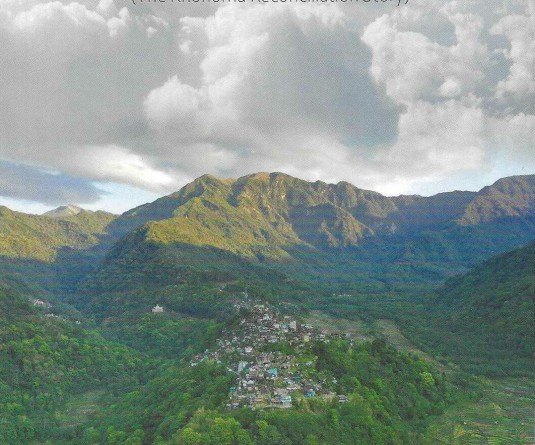
It’s possible.
Travelling down from Kohima to Dimapur, one can’t help noticing the new earth dug by the roadside, the rocks and stones ripped out and reused to ‘develop’ the area. I suppose it is sentimental to see the soft womb of mother Earth in the wet soil and saplings of trees that lie like exposed wounds by the roadside. It is part of the inevitable, unavoidable fallout from the need for development.
The woman seated behind me chattered on about business and how it was important and necessary and how everyone, every Naga was doing business now. A heavy-set, middle-aged woman, she could discuss the price of almost every product from snails to onions, tomatoes and persimmon to stone chippings and iron rods. Every few minutes she made calls to different persons – her autowala in Dimapur town to meet her at the Supermarket, her supplier in the market to be ready as she was reaching in precisely twenty minutes and so on. Admirable. These are the people who transact with suppliers in Dimapur to transport the goods that we consume in Kohima. Practical to the bone, she rattled off figures and percentages, and drove a hard bargain with her suppliers.
‘A little poetry for you madam?’
‘Poetry! Poetry – what is that? If I can’t sell it, I have no use for it. Is there a market for it? Will I get buyers? Do you know any suppliers in Dimapur?’
Life without poetry is possible. I don’t, however, recommend it.
Combating concrete
In a survey on climate change, different Naga villages have submitted responses that are almost identical.
Has the climate changed? A unanimous Yes.
‘We know the climate has changed because birds that used to live in the lower, warmer regions have migrated up here nowadays,’ an eighty-year-old commented. ‘Species of rice that were not suitable for cold climate can now be planted here successfully,’ he added.
Other stories were not as positive. Nowadays, the rainfall is either excessive or not sufficient. We either have months of drought or unseasonal rain both of which damage agricultural production.
There were remarks on snowfall and hailstorms that were both unusual phenomena but not necessarily welcome apart from the preliminary excitement of snow. The unusual weather patterns have lost their excitement and are becoming cause for worry amongst rural farmers.
Can you identify some causes?
The response to this question yielded almost identical answers such as deforestation. People were quick to blame cutting of trees and burning of the undergrowth for the sake of jhum cultivation. Excessive exploitation of forest produce for food was another cause mentioned. It was interesting that all were in agreement that the cutting of trees has resulted in warmer climate and scarcity of rain. These were answers from simple farmers without access to scientific articles on climate change.
Perhaps in a likewise simple manner, climate change can be combated. The loss of tree cover in city areas makes the heat unbearable. Remember old Chumukedima with the gorgeous line of trees on either side of the road giving much needed shade and the bonus of a beautiful sight for travellers? It’s a loss that is surely not irreplaceable. Surely it is still possible to grow suitable species of trees on the sides of the new Chumu road? Even if they are not able to grow to the same size as their forbears, the oxygen they produce will be a welcome addition to our sulphuric weather. Could the municipal bodies come up with city greening projects whereby more shrubs/trees can be planted outside each shop using concrete planters? Would that little effort not add a lot to the cityscape?
Bhubaneshwar, the first smart city, rightly deserves the title. The roads are tree-lined and the cover of the trees takes much of the edge off the tropical heat of the sun. A constant breeze in the trees keeps cooling down the road level for pedestrians. It is very restful on the eye to see flowering trees on each avenue. The added effect it has on calming the viewer cannot be denied. It is not only the aesthetic effects that trees would add, but the health benefits that can be reaped from such an endeavour that makes it worth exploring. Why don’t we take a leaf, literally, out of the Odia page?






